René Magritte in 10 Paintings
René Magritte (1898–1965) stood at the heart of Surrealism, yet his art leaned toward a more figurative vision. He transformed ordinary objects...
Errika Gerakiti 21 November 2025
Artists often paint portraits of their peers as gestures of admiration, friendship, or artistic dialogue. These works reveal more than stylistic similarities—they reflect shared creative visions, pivotal historical moments, and, at times, quiet rivalries. By documenting connections and experimenting with style together, these portraits provide insight into the lives and relationships of the artists. Read on to learn about the interpersonal relationships of 10 selected artists.
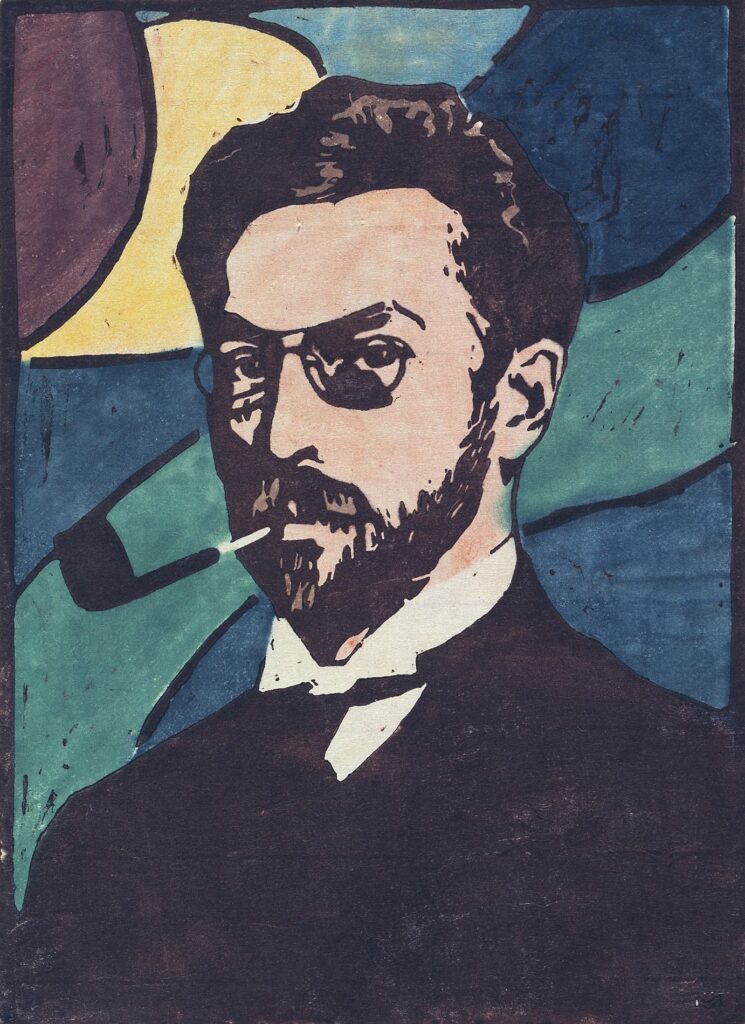
Artists Who Painted Other Artists: Gabriele Münter, Portrait Of Wassily Kandinsky, 1906, Lenbachhaus, Munich, Germany. Museum’s website.
Wassily Kandinsky and Gabriele Münter were key figures of the Der Blaue Reiter (Blue Rider) movement, beginning their collaboration before the group’s founding. Münter enrolled in Kandinsky’s art school in Munich in 1901, and they were a couple from 1902 until their separation in 1916.
Their relationship was both a passionate love affair and a significant artistic partnership, despite Kandinsky being married at the time. Together, they traveled across Europe from 1904 to 1908, employing Impressionist techniques and collecting photographs that reflected their artistic vision. Returning to Munich in 1908 deeply influenced their work and the Expressionist movement.

Artists Who Painted Other Artists: Andy Warhol, Jean-Michel Basquiat, c. 1982, The Andy Warhol Museum, Pittsburgh, PA, USA. Museum’s website.
Andy Warhol collaborated with Jean-Michel Basquiat in the 1980s, creating over 100 paintings together. Their relationship was one of both partnership and friendship, marked by deep admiration along with occasional tension. During their collaborative process, Warhol would trace Pop Art symbols onto canvases, and Basquiat would add his distinct Neo-Expressionist style. This combination of Warhol’s graphic pop symbolism and Basquiat’s raw Neo-Expressionism created compelling visual dialogue that attracted both acclaim and controversy.
It was like some crazy art world marriage, and they were the odd couple. The relationship was symbiotic. Jean-Michel thought he needed Andy’s fame, and Andy thought he needed Jean-Michel’s new blood. Associating with Jean-Michel furthered Andy’s rebellious image.
Victor Bockris, Warhol: The Biography, Frederick Muller, 1989.
Their contrasting styles produced a striking visual dialogue—Warhol’s commercial detachment clashing with Basquiat’s raw, emotional intensity. The results were provocative, layered, and often polarizing, challenging conventions around authorship, fame, and identity in contemporary art.
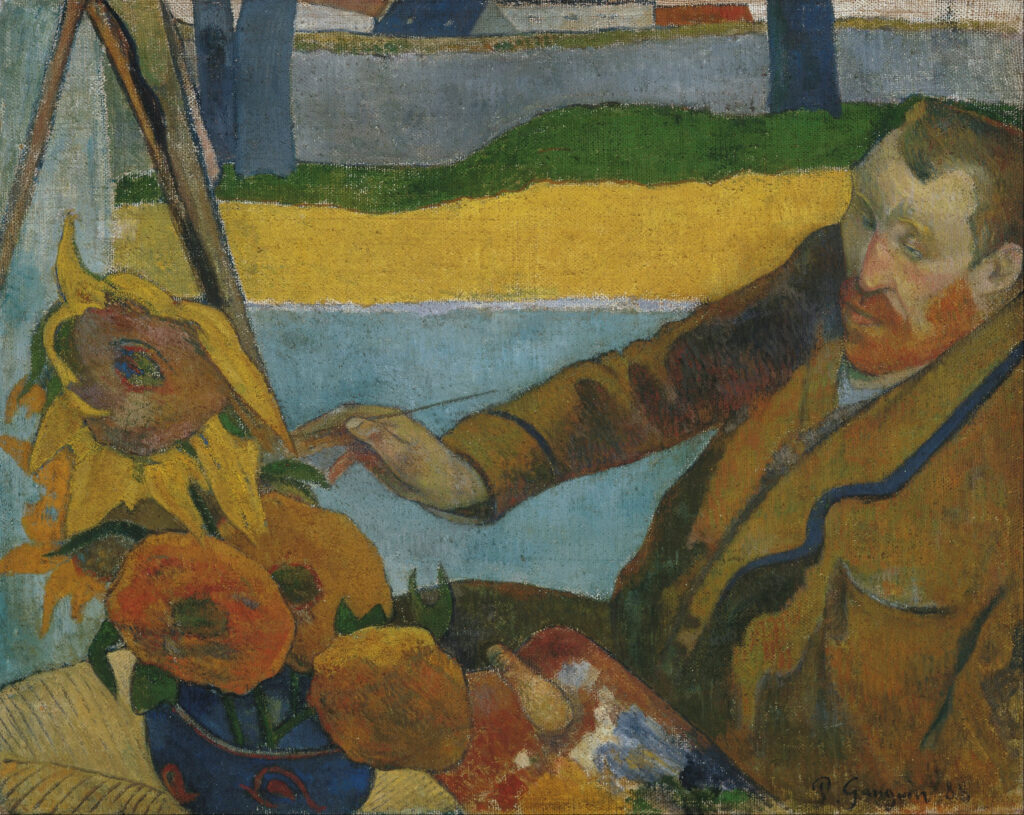
Artists Who Painted Other Artists: Paul Gauguin, Vincent van Gogh Painting Sunflowers, 1888, Van Gogh Museum, Amsterdam, Netherlands. Museum’s website.
Vincent van Gogh and Paul Gauguin shared a complex and ultimately volatile relationship that began in Paris in 1887. Drawn together by their shared ambition to revolutionize modern art, they reunited in Arles the following year with the dream of founding a Studio of the South—a haven for artistic collaboration and innovation. Yet their starkly different temperaments soon clashed: Van Gogh, emotionally intense and idealistic, contrasted sharply with Gauguin’s more detached and self-assured nature.
“You have art in your blood, and that’s a good thing, old chap.”
Letter to Theo van Gogh, January 1874, letter #17. Van Gogh Museum.
Tensions escalated, culminating in a dramatic and infamous incident in which Van Gogh mutilated his ear, prompting Gauguin’s departure from Arles. Though their time together ended in crisis, they continued to correspond, and the creative energy of their brief collaboration left an enduring mark on both artists. Their fearless exploration of color, emotion, and symbolism would go on to shape the course of modern art for generations to come.

Artists Who Painted Other Artists: Diego Rivera, Portrait of Frida Kahlo, c. 1935, Los Angeles County Museum of Art, Los Angeles, CA, USA. Museum’s website.
Frida Kahlo and Diego Rivera had a passionate and complicated relationship, marked by deep love and repeated betrayals. They married in 1929, divorced in 1939, and remarried a year later. Their bond was intense but often turbulent, with both experiencing infidelities and personal struggles. Despite these challenges, they remained emotionally connected and deeply influential in each other’s lives.
“I suffered two grave accidents in my life. One in which a streetcar knocked me down… the other accident is Diego. Diego was the worst by far.”
Their relationship greatly shaped their art. Kahlo expressed her pain and identity through powerful self-portraits filled with symbolism, while Rivera created large murals focused on Mexican history and social themes. Though their styles differed, both shared a strong love for Mexican culture and politics, making them two of the most iconic artists of the 20th century.
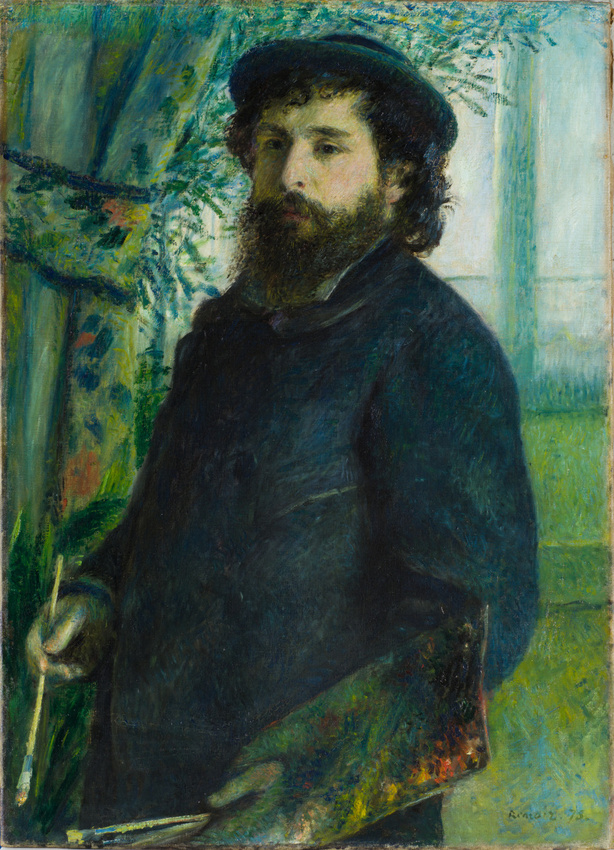
Artists Who Painted Other Artists: Pierre-Auguste Renoir, Claude Monet, 1875, Musée d’Orsay, Paris, France. Museum’s website.
Claude Monet and Pierre-Auguste Renoir were close friends and key figures in the Impressionist movement. They met in the 1860s and often painted together, most famously at La Grenouillère in 1869. Their work from this period helped define Impressionism, with loose brushwork and a focus on light and everyday life.
While Monet concentrated on landscapes and natural light, Renoir preferred painting people and social scenes. Despite their different styles and occasional artistic disagreements, their friendship remained strong. Renoir’s 1872 portrait of Monet’s wife, Camille, reflected their close personal bond and lasting respect for one another.
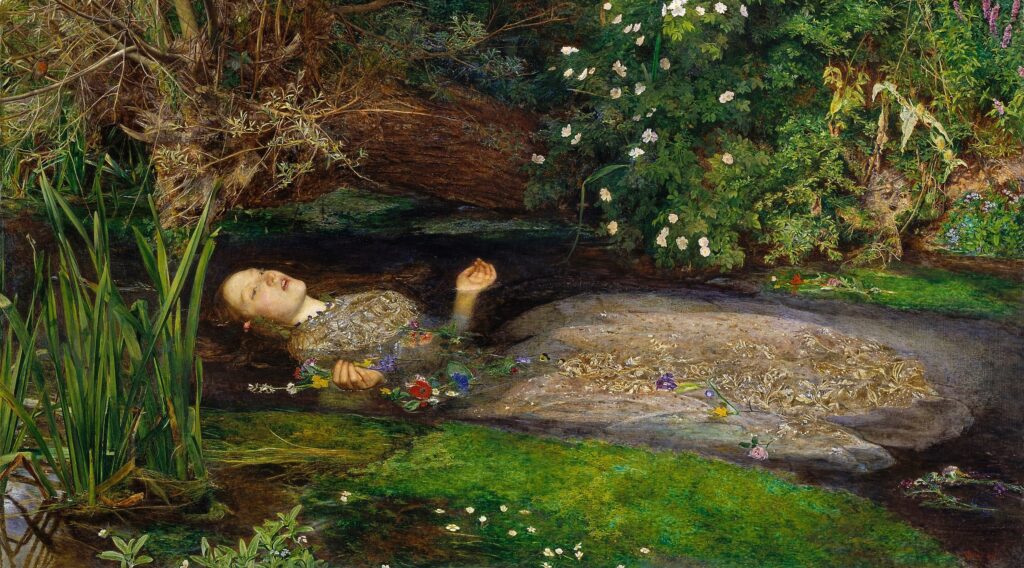
Artists Who Painted Other Artists: John Everett Millais, Ophelia, c. 1851, Tate, London, UK. Museum’s website. Detail.
Elizabeth Siddal was a prominent figure in the Pre-Raphaelite movement, best known as the model for John Everett Millais’ iconic painting Ophelia. Their collaboration was intense—Siddal posed for hours in cold water to help Millais achieve his vision, reportedly falling ill as a result. Though often seen as a muse, she was also a skilled artist and poet, earning recognition within the Pre-Raphaelite circle.
Siddal later developed a deep, though troubled, relationship with Millais’ friend, Dante Gabriel Rossetti, whom she eventually married. Their marriage was marked by emotional strain, ill health, and personal loss. In 1862, Siddal died of a laudanum overdose, leaving a profound impact on Rossetti and the broader artistic community. Her legacy endures as both a muse and an artist in her own right.

Artists Who Painted Other Artists: André Derain, Henri Matisse, 1905, Tate, London, UK. Museum’s website.
In the summer of 1905, Henri Matisse invited André Derain to join him in Collioure, a small fishing village on the French Mediterranean. There, under the blazing southern light, the two artists embarked on a radical exploration of color and form. Abandoning naturalistic hues, they applied vivid, often non-representational colors with bold, expressive brushwork—capturing not the appearance of the landscape, but the sensations it evoked.
When their work debuted at the Salon d’Automne in Paris later that year, it stunned viewers and critics alike. One critic, noting the explosive palette, dubbed them les Fauves—“the wild beasts.” The name stuck, marking the beginning of Fauvism. Their time in Collioure not only redefined modern color theory but also set the tone for a new era of emotional expression in art.

Artists Who Painted Other Artists: Henri de Toulouse-Lautrec, Portrait de Suzanne Valadon, 1885, Museo Nacional de Bellas Artes, Buenos Aires, Argentina. Museum’s website.
Henri de Toulouse-Lautrec and Suzanne Valadon shared a close, complex relationship—part friendship, part romance—set against the vibrant backdrop of Montmartre’s bohemian art scene. Valadon, then a model navigating the artistic circles of Paris, found in Lautrec both a mentor and a supporter. He was among the first to recognize her artistic talent, purchasing her early works and introducing her to influential figures like Edgar Degas, who would become another key advocate.
Their relationship was marked by a sense of playful camaraderie. Valadon often assisted Lautrec in organizing his legendary soirées, entertaining guests, and immersing herself in the creative chaos that defined their world. More than muses or lovers, they were artistic equals in conversation—each shaping, in their own way, the bold spirit of Montmartre at the turn of the century.
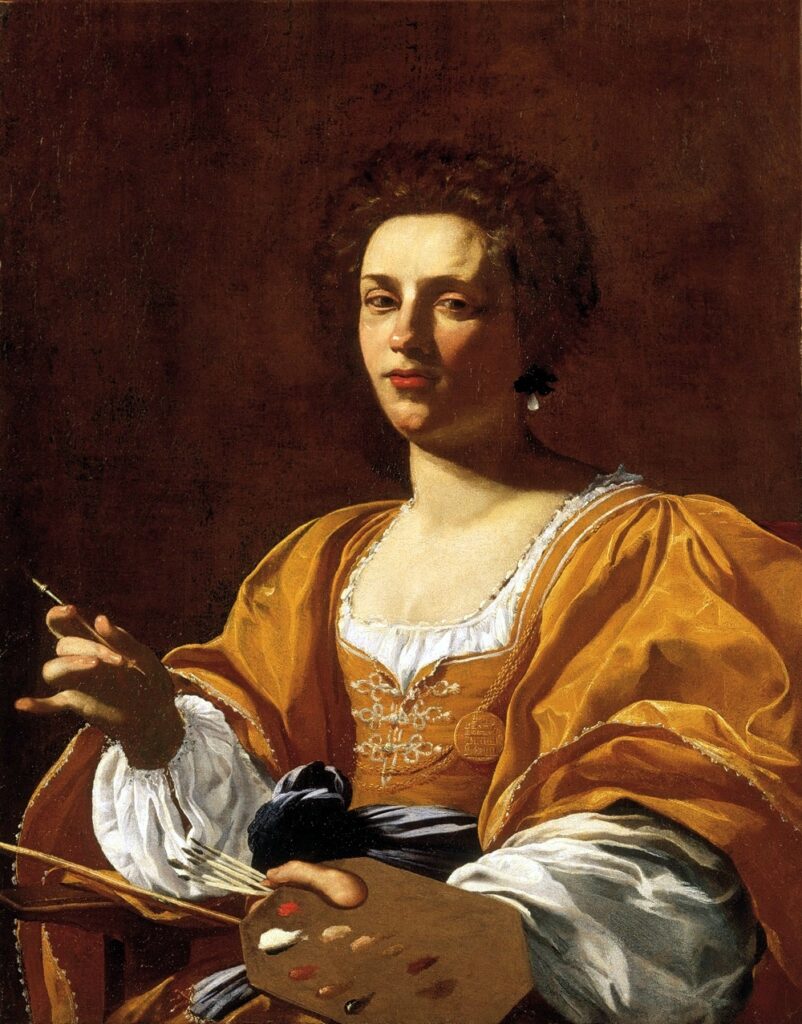
Artists Who Painted Other Artists: Simon Vouet, Portrait of Artemisia Gentileschi, c. 1623–1626, Palazzo Blu, Pisa, Italy. Museum’s website.
Artemisia Gentileschi and Simon Vouet shared a professional relationship during their time in Rome, where both were active participants in the Caravaggisti movement. Their artistic dialogue is evident in the stylistic parallels found in their work. Gentileschi’s dramatic use of light and expressive realism resonated with Vouet’s evolving Baroque style.
Vouet painted a portrait of Gentileschi that depicted her with elegance and strength, emphasizing both her artistry and status in the Roman art world. This portrait not only highlights her stature within the Roman art world but also reflects the mutual influence and admiration between the two painters.
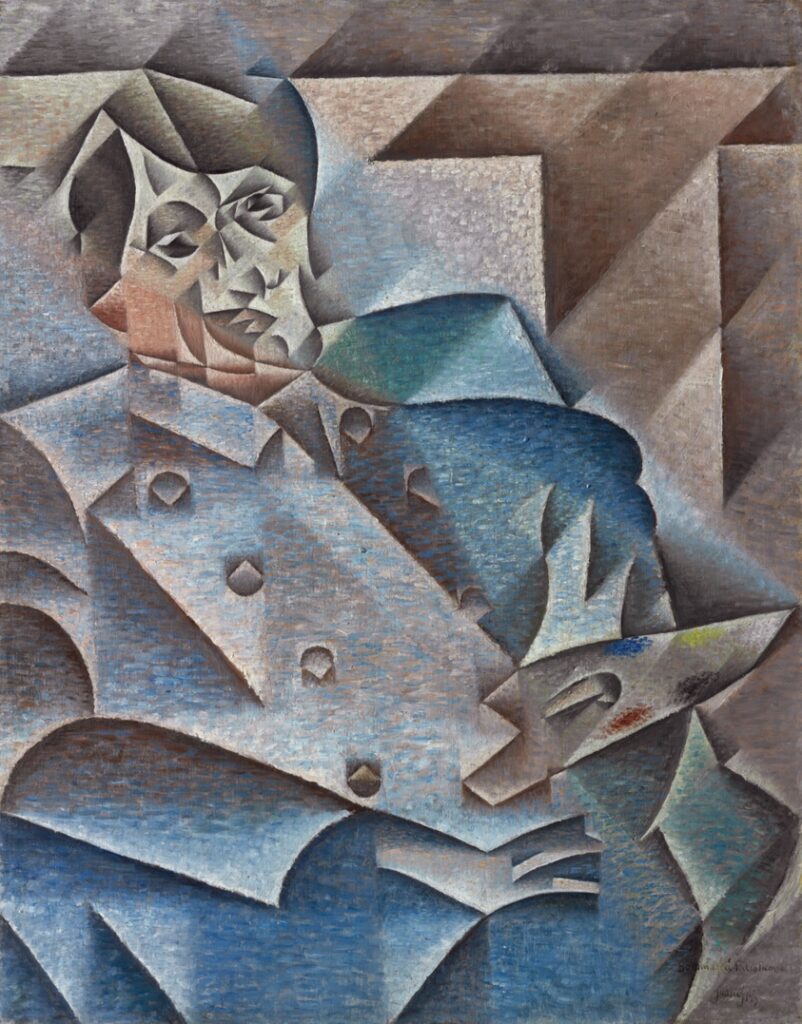
Artists Who Painted Other Artists: Juan Gris, Portrait of Pablo Picasso, 1912, Art Institute of Chicago, Chicago, IL, USA. Museum’s website.
In 1906, Juan Gris moved to Paris and joined the Cubist movement with Pablo Picasso and Georges Braque. By 1912, he had become recognized as a leading Cubist artist, with critics referring to him as “Picasso’s disciple.” Yet, Gris developed a distinctive approach that set him apart, blending Analytic Cubism with a more structured geometry and a cool-toned color palette that lent his compositions a rhythmic clarity.
His Portrait of Pablo Picasso, exhibited at the Salon des Indépendants, goes beyond homage. It reflects a complex relationship of artistic admiration and tension, capturing both Picasso’s presence and Gris’s refined stylistic voice. Through this portrait, Gris solidified his place in the Cubist movement while acknowledging Picasso’s influence in shaping the path.
These portraits transcend the boundaries of art—they narrate tales of connection, creativity, and the human aspects of an artist’s life. They transform artists from simple names into individuals with friendships, loves, and wisdom. These works reflect the relationships that foster collaborations and archetypes, subtly shaping the art world behind every canvas.
Vertigo of Color: Matisse, Derain and the Origins of Fauvism, Metropolitan Museum of Art, New York. Accessed: Aug. 22, 2025.
Isabel Alcántara, Frida Kahlo and Diego Rivera, Prestel, New York, 1999.
Keith Christiansen, Becoming Artemisia: Afterthoughts on the Gentileschi Exhibition, Metropolitan Museum of Art, New York, 2004. Accessed: Aug. 22, 2025.
Hal Foster, et al., “Art Since 1900,” in Modernism, Antimodernism, Postmodernism, Thames & Hudson Ltd, London, 2018.
Annegret Hoberg, “Wassily Kandinsky and Gabriele Münter,” in Letters and reminiscences, 1902-1914, Prestel, New York, 1994.
Jan Marsh, The legend of Elizabeth Siddal, Quartet Books, New York, 1989.
Joost van der Hoeven, “Vincent van Gogh Painting Sunflowers”, in Contemporaries of Van Gogh 1: Works Collected by Theo and Vincent, Van Gogh Museum, Amsterdam, 2023. Accessed: Aug. 22, 2025.
DailyArt Magazine needs your support. Every contribution, however big or small, is very valuable for our future. Thanks to it, we will be able to sustain and grow the Magazine. Thank you for your help!